Updated By Vinyl Frog On March 28, 2024
How Much Vinyl Needs To Wrap Your Vehicle

Vinyl wrapping is the process of covering a vehicle with a thin layer of vinyl. This can be done for a variety of reasons, but it typically involves covering a vehicle's existing paint job with high-quality vinyl. This allows for the vehicle to have a new look without having to pay for expensive repainting or replacement parts.
Whenever you order vinyl for your car, make sure you have enough to cover the entire vehicle. If you order too little, there may be places where the color doesn't match well and looks sloppy. If you order too much, then you'll end up wasting money on materials that aren't used.
Quick Formula To Measure How Much Vinyl Needs To Wrap?
If you're trying to figure out how much vinyl you need to wrap a vehicle, here are some quick formulas to get the right amount.
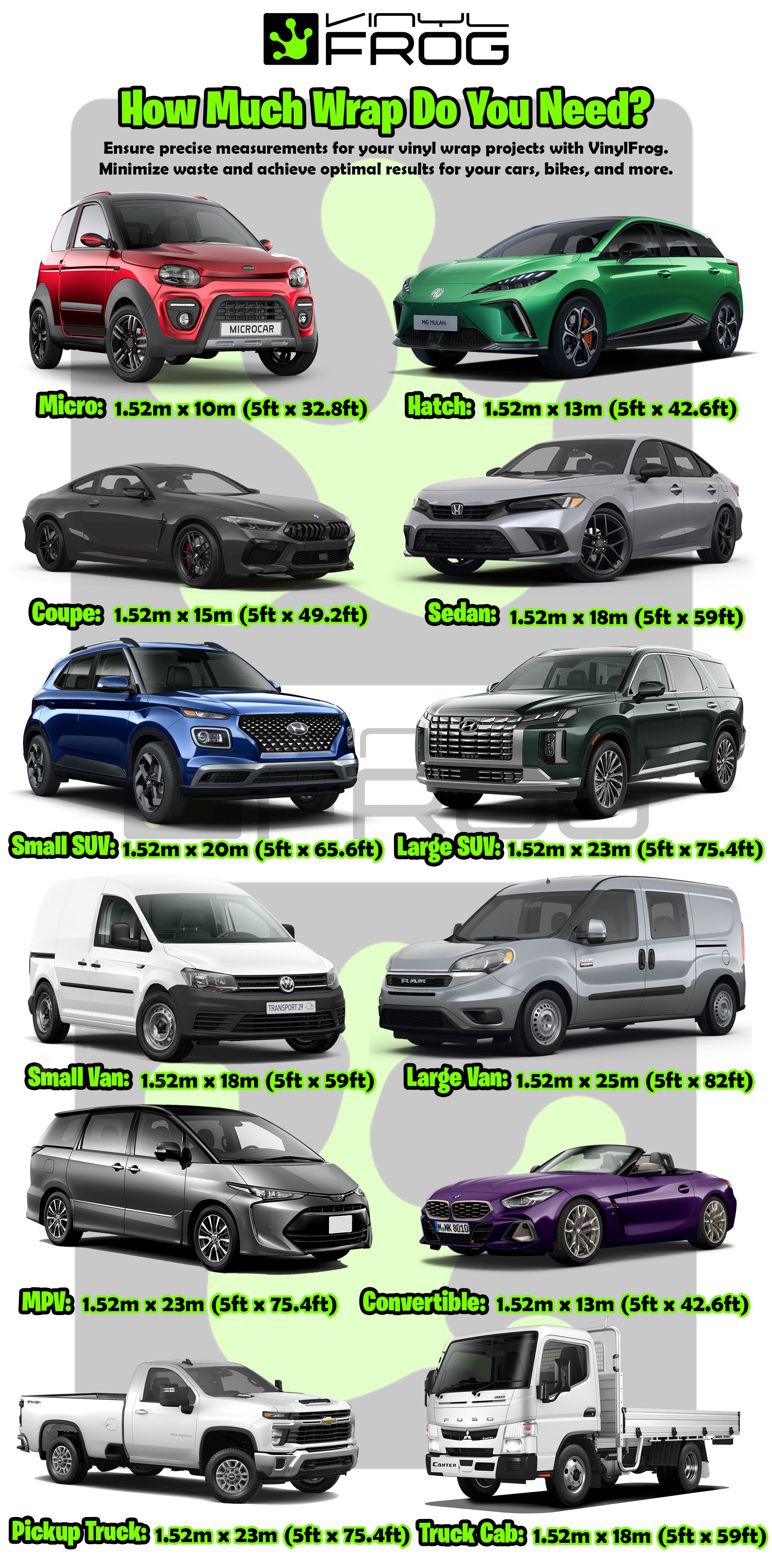
Width x Length x Repeat = Total Yardage
- Width is the length of the side of the vehicle or any other flat surface you are trying to cover.
- Length is the length of the vehicle from front to back (or back to front).
- Repeat is the number of times that length will be repeated on either side of your project area.
(Length x Width x Number of Seams) x 0.5" = Total Square Feet
Example: (12" x 12" x 2) x 0.5" = 30 Square Feet
So if you have an 8" X 8" piece of plastic wrap and want to cover it with a 6" X 6" piece of paper, then simply multiply 8 X 8 X 2 = 96 square inches. 96 square inches divided by 3 equals 32 square feet total amount of material needed for this project.
Factors To Consider
The amount of vinyl you'll need depends on the size and shape of your vehicle and what kind of graphics you want to apply. The good news is that we can help you figure out exactly how much vinyl is needed for your project!
Here are some factors to consider when determining how much vinyl you need:
What Is The Size Of Your Vehicle?
The first thing to consider when buying vinyl is whether your project requires pre-cut or custom-cut pieces. If you are wrapping something like a car, truck, or motorcycle, then pre-cut pieces will be the best option for you. Pre-cut pieces are designed to fit most vehicles with ease and they come with all of the necessary needed for installation.
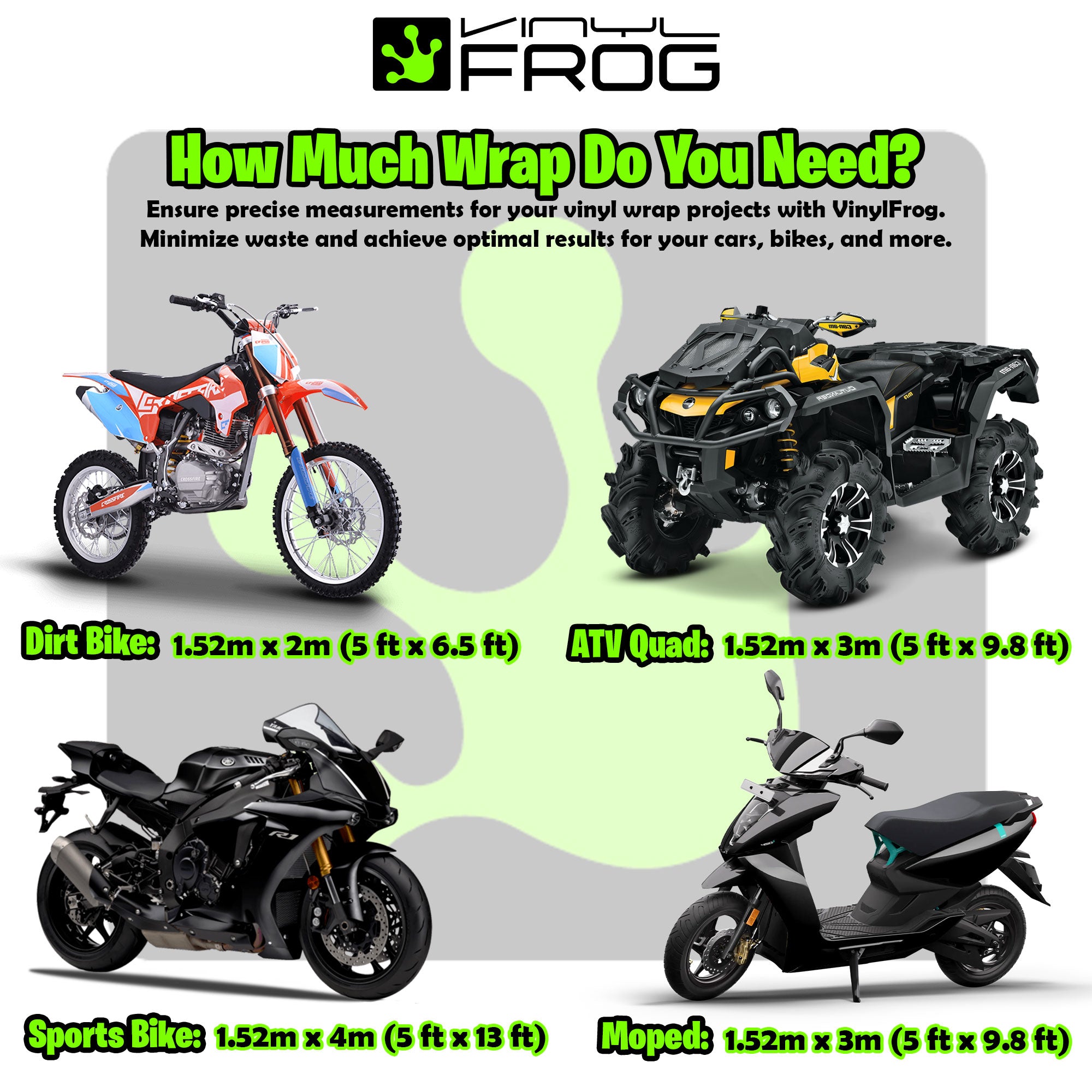
Width And Height Of Your Vehicle
The size of your vehicle will determine how much coverage you need. For example, a small car might only need one piece of vinyl, but a truck could need several pieces. The size of the object or area you're covering is also important. If it's a large vehicle, for example, you may need more than one roll of vinyl in order to cover it entirely.
Length And Width Of The Area You Want To Cover
If you're wrapping an entire car or truck, the length and width of the object determine how much material you'll need. For example, if you're wrapping a motorcycle, then the length and width of that bike determine how much vinyl you'll need in order to cover it entirely. The same goes for any other vehicle that needs to be wrapped with vinyl (such as Trucks, and SUVs).
To be honest, the best way to determine how much vinyl you need is by measuring the length and width of your vehicle at various points along its surface using a tape measure. Once you've got your measurements down, add between 10% and 20% more than what you calculate will be needed based on those numbers so that there is enough extra material for any mistakes or oversights made during installation.

For example, if you want to wrap an SUV, you would probably need 10-12 square feet of material per side. This means that if you wanted to wrap the whole thing in vinyl, you would need 20-24 square feet total. If you are looking for something less expensive, then consider using a smaller quantity of vinyl to cover only certain parts of your car or truck. For example, some people choose to cover only the back window or rear bumper instead of wrapping their entire vehicle in vinyl.
How Much Vinyl Needs To Wrap A Car?
The answer is not that simple. As you studied above, the amount of material needed to wrap your vehicle will depend on several factors including the size of your vehicle, the type of material being used, and the design you are looking for.
For example, if you are wrapping a motorcycle or bicycle with a solid color then the material can be cut down to the shape of your vehicle. However, if you want to add graphics or logos then more material is needed because it will take more time and effort to apply them correctly.
Here's How Much Vinyl You'll Need For A Few Different Types Of Vehicles:
Car:
5-10 square feet per side depending on the size of your car and whether or not you want any graphics on top (if so)

Car Wraps - Vinyl Car Wraps | Vinyl Frog
Motorcycle:
10-20 square feet per side depending on how large the bike is and whether or not there are any graphics on top (if so)

Motorcycle Vinyl Wraps - Available In All Colors
Bicycle:
2-6 square feet per side depending on how big the bicycle is and whether or not there are any graphics on top (if so)

Bicycle Vinyl Wraps - Available In All Colors
SUVs:
5-10 square feet per side depending on the size of your SUV and whether or not there are any graphics on top.
Trucks:
For a standard 18-foot truck, you'll need about 19.5 feet of vinyl to wrap the whole thing. For a 23-foot truck, you'll need about 25 feet of vinyl.
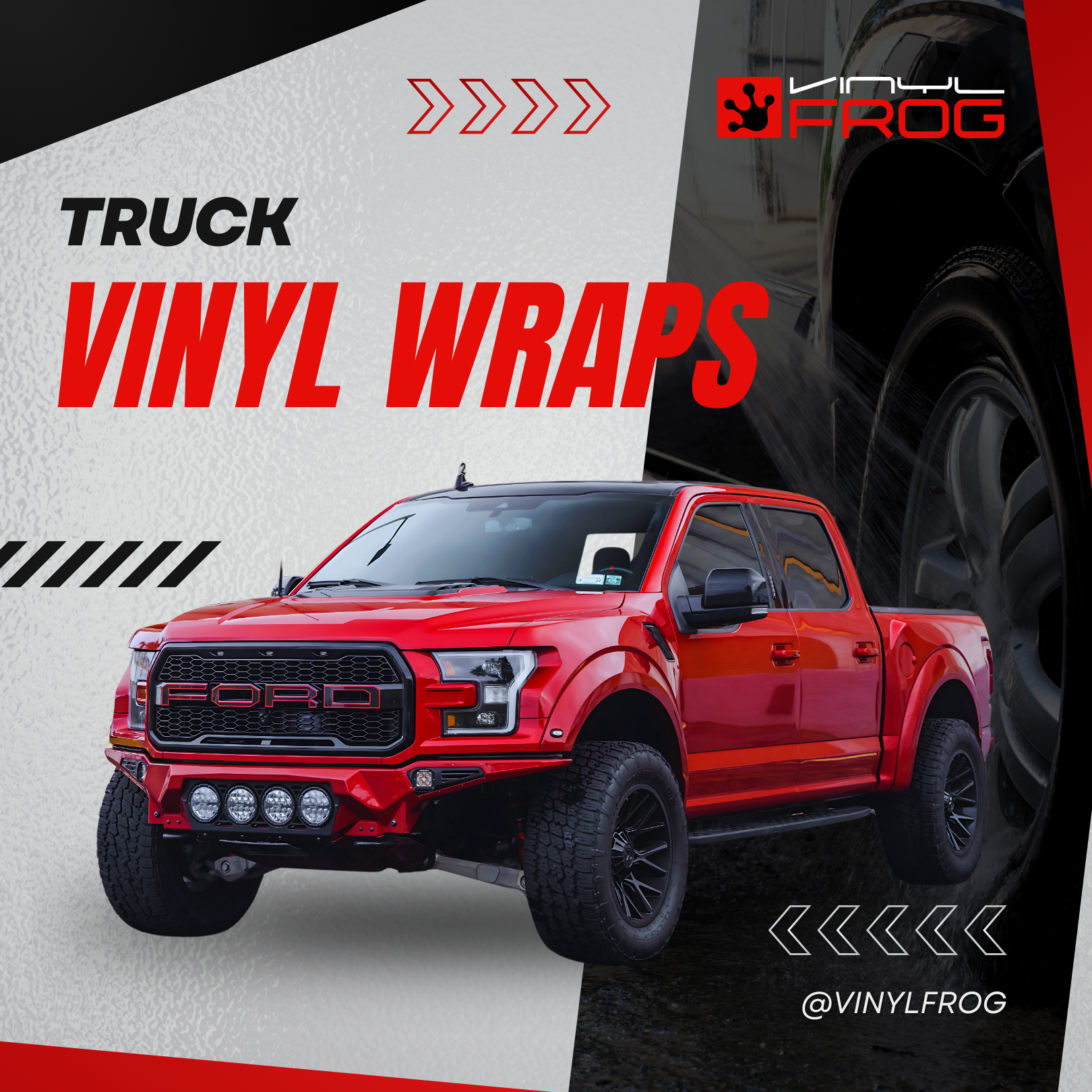
Truck Wraps - Available In All Colors
Boats:
Simply multiply the length of your boat by its width to get the area it takes up. Then divide that number by 27,000 square feet (the amount of vinyl it takes to cover a boat).
If you have a larger vehicle, say a Jeep, then you'll need more than if you had a smaller car.
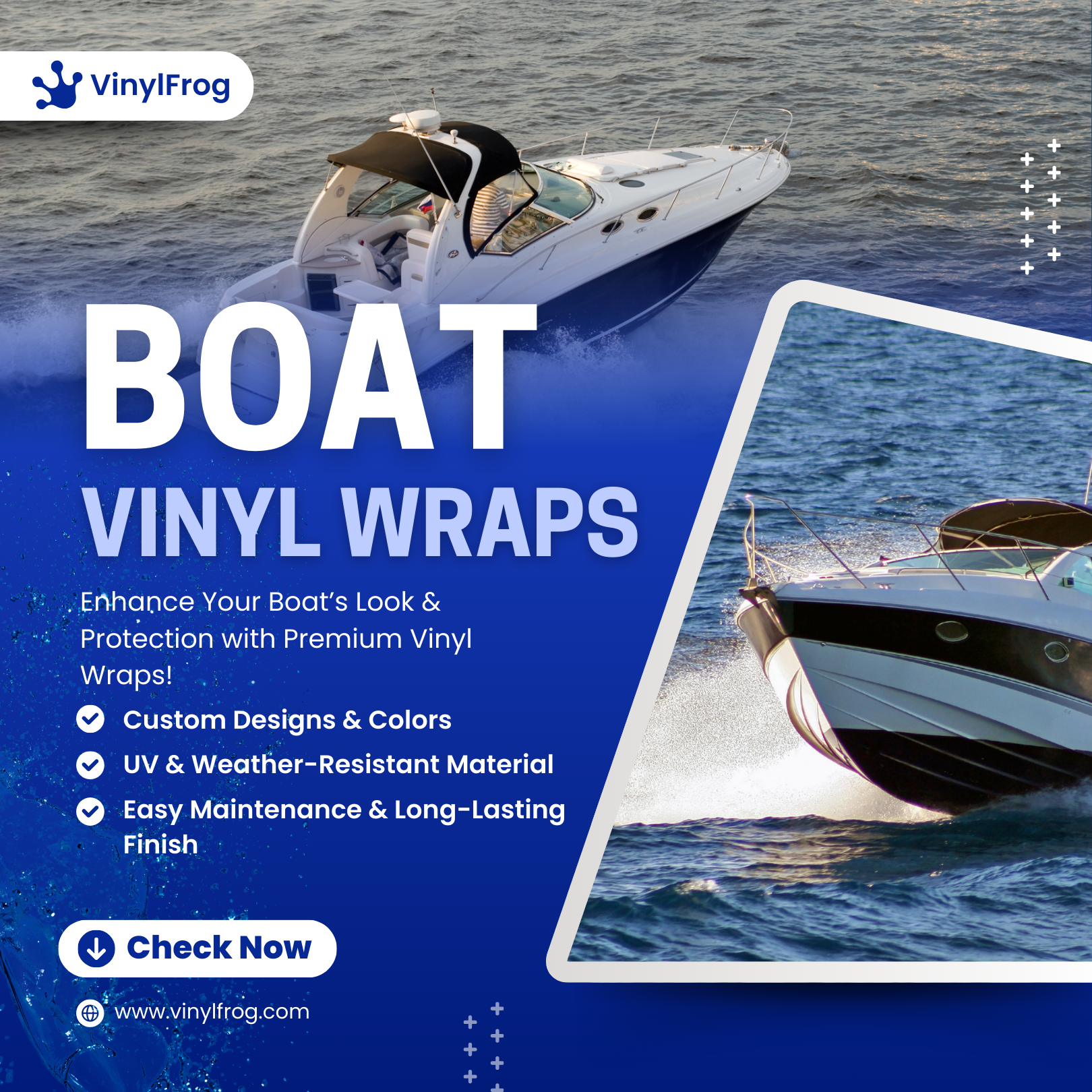
Boat Vinyl Wraps - Available In All Colors
According To The Rule Of Thumb, 10 Inches Of Length Is Equal To 1 Square Foot Of Material.
So if your vehicle is 20-feet long, then you'll need 20 square feet of material. The same goes for height. If your vehicle is 7-feet high, then you'll need 7 square feet of material to cover it completely.
How Long Does It Take To Wrap A Car?
The average size car takes About 2 To 3 hours to wrap. It takes different amounts of time depending on how big the car is and how many panels need to be covered. The more panels you have to cover, the longer it will take. The following factors can also influence the process:
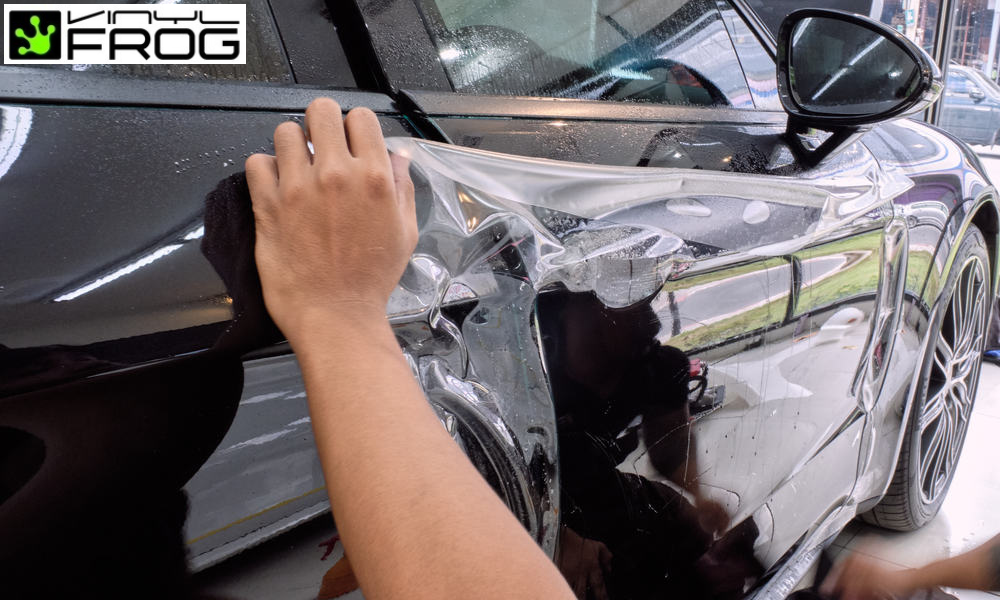
- If you live in a warm climate or during the summer months, your vinyl may not adhere well due to temperature changes. It is especially important if you have to cover a large area (like a roof or hood). If you live in a hot climate, we recommend waiting until fall before purchasing vinyl so that it can be installed when temperatures cool down.
- If you have an older car with lots of dings and scratches in its paint job, then it could take longer for us to mask off those areas before installing your vinyl graphic wrap because we have to make sure that no paint gets ruined by overspray from our spray guns.
- Putting on graphics over chrome bumpers or chrome trim pieces will take longer than putting them over painted bumpers or trim pieces because chrome is harder for us to mask off without getting overspray on them (which could damage them).
How Many Layers Do I Need?
This depends on your goals and preferences but it's important to note that multiple layers can have an impact on both durability and appearance.
For example, if you're going for maximum durability in low-UV environments like Canada or Alaska where there are fewer hours of sunlight per day, then multiple layers are probably required since they offer increased protection against fading due to UV exposure. On the other hand, if you're looking for a high-gloss finish with minimal added weight and thickness, then one layer will probably suffice.
Final Words
Final Words
It's important not to forget that not all materials are created equal. Some brands of vinyl are thinner than others and may not be as durable as others.
For example, if your vehicle has an open roof or no roof at all (like with convertibles), then it's best to buy thicker rolls because wind resistance can cause damage if there aren't strong enough materials protecting it from being blown off by strong gusts of wind or other weather conditions.
Your personal preference, availability, and skill level will all affect the number of yards needed. Play it safe and buy 100% extra. You can't have too much vinyl, but you can run out at a most inopportune time!




